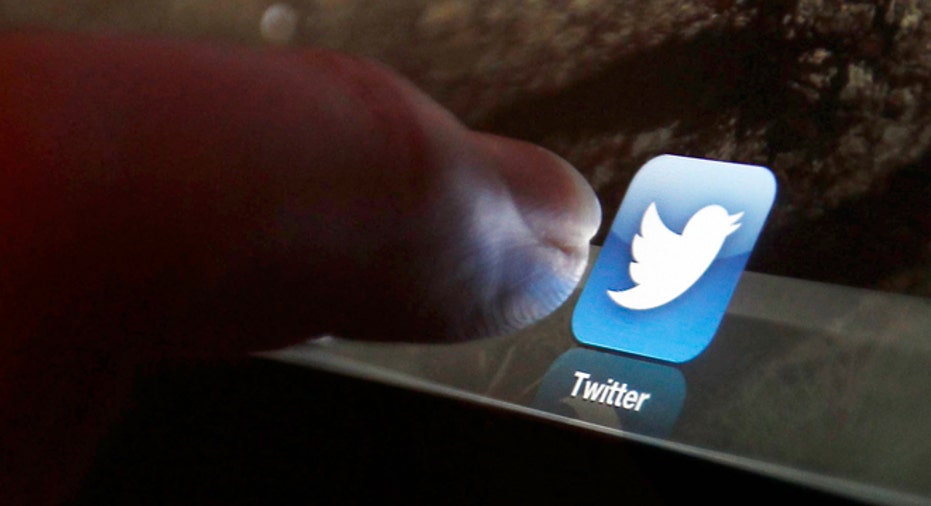Gender Bias at Twitter?

On the heels of last week’s Twitter IPO filing, a New York Times article took aim at the social media company’s male-dominated leadership, sparking a debate over gender bias in the tech industry.
Vivek Wadhwa, an outspoken Stanford fellow who is writing a book on women in technology, said, “This is the elite arrogance of the Silicon Valley mafia, the Twitter mafia. It’s the same male chauvinistic thinking. The fact that they went to the IPO without a single woman on the board, how dare they?”
In a follow-up TechCrunch article, Wadhwa continued to blast Twitter CEO Dick Costolo, not least of which for calling him “the Carrot Top of academic sources” on Twitter:
“Costolo isn’t alone in the way he responds to criticism about sexism. Here is the harsh reality: Silicon Valley is a boys’ club — a fraternity of the worst kind. It stacks the deck against women. It leaves out blacks and Hispanics. And it provides unfair advantage to an elite few who happen to be connected.
“What Twitter should have done in preparation for being a public company is to have it resemble the people they are going to be taking a billion dollars from — the people who are going to be making its executives and investors rich. This includes women as well as men, and blacks as well as whites.”
Wadhwa’s tirade is so wrong on so many levels I can see why Costolo responded by calling attention to the academic’s “propensity for silly hyperbole,” as he later tweeted.
Having spent several decades in the high-tech industry, primarily in Silicon Valley, let me shed a little unbiased light on the gender-bias allegations and what, if anything, Twitter and other companies should and shouldn’t be doing differently.
First of all, the tech industry – in Silicon Valley and elsewhere – is predominantly male. And the executive management teams and boards of tech companies do resemble boys clubs. Those are undisputable facts.
But is that the result of gender bias or discrimination? Hardly.
Don’t get me wrong. I’ve seen gender bias in the technology industry. I’ve seen it quite extensively among males from certain Asian and Middle Eastern cultures, although I’m sure it’s politically incorrect to say that. I’ve also seen it among white males, but that was long ago and mostly by older executives who have since retired, and thankfully so.
Ironically, you could make a much better case for age discrimination in the tech industry, especially among newish internet companies. According to PayScale, the median age at Facebook and Google are 28 and 29, respectively. The average age of American workers is 42.3. I don’t know what the median age is at Twitter, but I’d be really surprised if it’s over 30.
But I digress.
So why are there so many fewer women than men in the technology industry, as all the data show? The truth is you find plenty of women in marketing, communications, HR, finance, and legal functions. But women tend to shy away from technical fields like software and hardware engineering – the bread and butter of high-tech.
The root causes of that are open to debate. Only one thing is certain: nobody in the corporate world is stopping them, least of all Costolo and Twitter. In other words, it’s a supply-side problem. There’s certainly no shortage of demand.
And, of the six executive officers named in Twitter’s S-1 filing, one of them, General Counsel Vijaya Gadde, is in fact a woman. If my math is correct, that’s a tad bit higher than the national average of 15%. And Twitter actually has at least four other women vice presidents, which the Times article does point out – way down in paragraph 11.
I also couldn’t help but notice that two of Twitter’s male executive officers, COO Ali Rowghani and CFO Mike Gupta, are of Middle Eastern and Indian decent. It seems ridiculous to have to point that out, but you’ve got to admit, this hardly looks like a company that’s thrown diversity to the wolves.
Which brings us to the point that many seem to be up in arms about: the composition of Twitter’s board of directors. Of the seven, three are company founders, one is from Benchmark Capital (a Twitter investor), one is a former CFO (a requisite since Sarbanes Oxley), and the other two are former top executives of Google and News Corp.
In other words, they all look to be excellent choices. And with just three discretionary directors, you can hardly build a discrimination case on one of them not being female. Besides, Costolo has reportedly been searching high and low for a woman to put on the board, to no avail. Again, it’s a supply problem.
As for the article’s assertion that Twitter’s investors were “all men,” I’m not sure I follow. Of the five 5% stockholders named in the company’s S-1 filing, only one is an individual, Rizvi Traverse. The other four are venture capital firms. Granted, they’re probably all male-dominated companies, but when it comes to raising capital, I seriously doubt if anyone cares whether a man or a woman writes the check.
Finally, there’s Wadhwa’s suggestion that, before filing to go public, Twitter should have ensured that it resembles those who will be buying its shares in the stock market. Not to be facetious, but considering that the vast majority of Twitter’s stock will be held by institutional investors – big banks and mutual funds – I’d say the company’s already done that. I can’t think of a bigger bastion of good-old white boys than Wall Street.
Okay, okay, I know what he meant. So now CEOs are supposed to restructure their management teams and boards around the demographics of their stakeholders. Wow, why didn’t I think of that? And people wonder why I have such little respect for corporate governance experts in academia.
Carrot Top indeed.